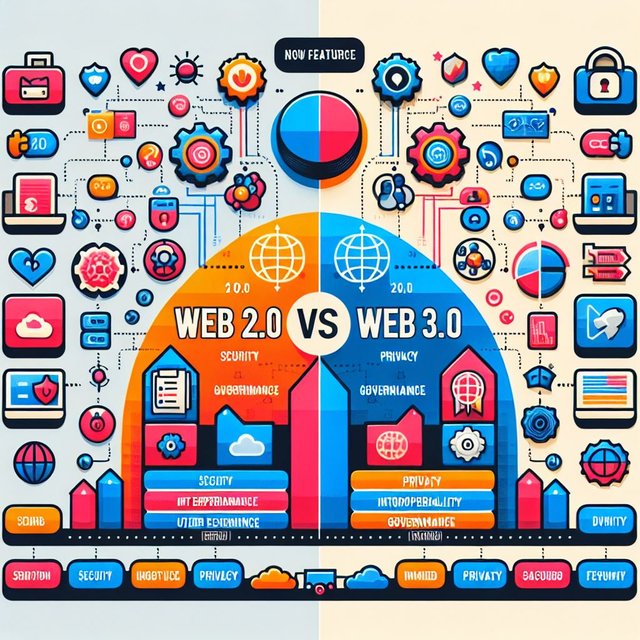
Introduction:
The internet has undergone a profound transformation since its inception, evolving through different phases. Two major milestones in this digital journey are Web 2.0 and the emerging Web 3.0. These phases represent significant shifts in the way we interact with and utilize the internet. In this blog post, we'll delve into the distinctions between Web 2.0 and Web 3.0, exploring their features, implications, and the potential future they hold.
Web 2.0: The Rise of Interactivity and User-Generated Content
Web 2.0, often referred to as the "social web," emerged around the early 2000s and marked a departure from the static, one-way communication of Web 1.0. Key characteristics of Web 2.0 include:
User-Generated Content (UGC): Platforms like social media, blogs, and wikis empowered users to create and share content. This shift from passive consumption to active participation defined the era.
Collaboration and Sharing: Web 2.0 fostered collaboration and sharing through platforms like Wikipedia, YouTube, and Facebook. Users could engage with each other, create networks, and share information seamlessly.
Rich User Experience: The advent of AJAX (Asynchronous JavaScript and XML) and advancements in web design led to more dynamic and interactive websites. This enhanced user experience became a hallmark of Web 2.0.
Web 3.0: The Decentralized and Intelligent Web
Web 3.0, also known as the "semantic web" or the "decentralized web," represents the next phase of the internet's evolution. It introduces revolutionary concepts that redefine how we perceive and interact with the digital realm:
Decentralization: Web 3.0 aims to decentralize the internet by leveraging blockchain technology. This means moving away from centralized entities that control data and transactions, offering increased security, transparency, and trust.
Blockchain and Cryptocurrencies: Distributed ledger technologies, such as blockchain, play a central role in Web 3.0. Cryptocurrencies enable secure and transparent transactions, and smart contracts automate and enforce agreements without the need for intermediaries.
Interoperability: Web 3.0 seeks to enhance interoperability between different platforms and services. This enables seamless data exchange and interaction, fostering a more interconnected and efficient digital ecosystem.
Machine Learning and AI Integration: The semantic web aims to provide more intelligent and context-aware services. Machine learning algorithms and artificial intelligence contribute to personalized and adaptive user experiences, anticipating user needs and preferences.
Implications and Future Outlook:
The transition from Web 2.0 to Web 3.0 has profound implications for various industries and societal structures:
Digital Ownership: Web 3.0 introduces the concept of true digital ownership, where users have control over their data and digital assets. This has implications for content creators, as blockchain technology enables the creation of non-fungible tokens (NFTs) that represent ownership of digital content.
Trust and Security: Decentralization enhances security and trust by reducing reliance on central authorities. Blockchain's cryptographic principles make data manipulation extremely difficult, addressing concerns related to data breaches and privacy.
Economic Paradigm Shift: The integration of cryptocurrencies and decentralized finance (DeFi) platforms challenges traditional economic models. Smart contracts automate financial transactions, reducing the need for intermediaries such as banks.
Conclusion:
Web 2.0 and Web 3.0 represent two significant chapters in the internet's ongoing evolution. While Web 2.0 focused on user participation and content creation, Web 3.0 is steering towards decentralization, trust, and intelligent interactions. The transition brings about exciting possibilities but also raises questions about regulation, ethics, and the societal impact of these transformative technologies. As we navigate this digital landscape, the interplay between user empowerment and technological innovation will shape the future of the internet.